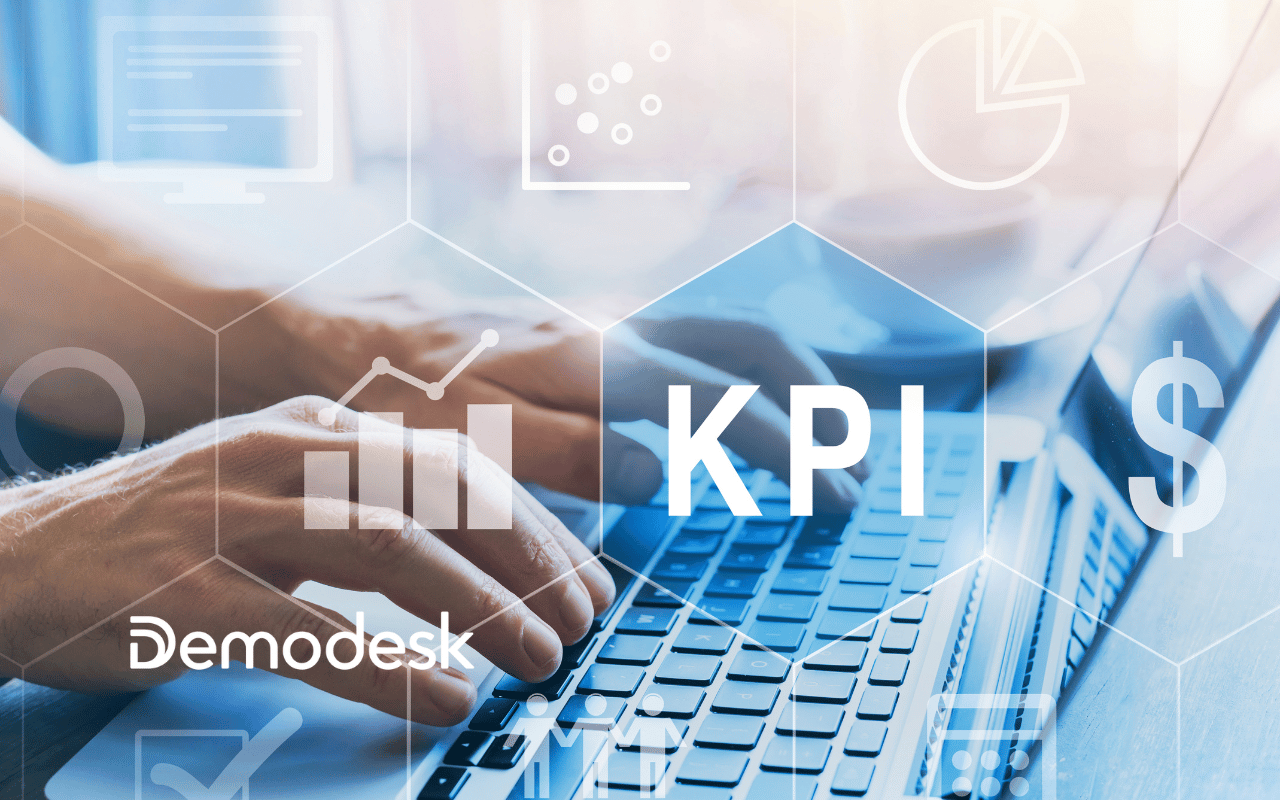Reps need to juggle so many different things during sales calls. They need to properly showcase their product, ask the right questions to understand the prospect’s challenges, handle objections AND make it all look effortless!
It’s a tall order, which is exactly why sales playbooks are an incredibly handy training resource. Especially when sales reps are still in the training phase and getting ramped up.
Sales playbooks are often used to centralize a team’s overall strategy and best practices to reinforce sales training. But it can also be a mighty resource that helps reps be more productive and achieve higher quota attainment.
In fact, the Aberdeen Group found that reps are 54% more likely to meet their sales goals when using sales playbooks versus 46% of reps who do not use playbooks.
But let’s be honest, how many sales reps actually read through their sales playbook? Let alone actually implement the strategies and best practices.
More often than not, sales playbooks function as theoretical guidebooks that are briefly referenced during team onboarding trainings. But they have the potential to be so much more! They can assist sales reps in real-time, like a coach that is always available to guide them through each stage of the sales process with best practices.
In this article, we’ll lay out a few sales playbook templates for common stages within a sales cycle that will reinforce the adoption of sales training and best practices:
- Playbook 1: Intro call/qualification
- Playbook 2: Discovery/product demo
- Playbook 3: Pricing/mutual outcome plan
- Playbook 4: Customer onboarding
Just here for the Sales Playbook Templates? No worries! You can download the Sales Playbook Templates, here!
What to include in every playbook
Each customer-facing meeting, regardless of the sales stage, should open with the camera view of the rep & prospect. This will help facilitate a natural flow to the conversation.
Here are some important points to hit during the opening conversation:
- Confirm attendees
- Confirm that the scheduled time still works for everyone
- Ask for recording consent
Reps should also use this time to take note of each attendee’s name, title, and contact information for future reference. If you already have a tool that syncs meeting notes directly to your CRM – all the better!

Playbook 1: Intro call/qualification
The main goal of a qualification/discovery call is to start building a good relationship with the prospect and determine whether your product could be a good fit for their needs.
You can facilitate this stage in the sales process by setting up your playbook with the questions your reps need to ask the prospect.
Key slides:
Slide 1: Agenda
This slide helps to outline the call so both the prospect and the rep know what to expect during the conversation.
When creating this agenda slide, consider the following:
- Why did the prospect attend the meeting?
- Can you address their main concern by the end of the meeting?
- How can you supply them with the information they need?
- Does your product solve their problem? How?
The agenda should also differ depending on whether the call is inbound or outbound. For example:
- Outbound agenda: Reps should first explain why they reached out to the prospect before giving an overview of the call.

- Inbound agenda: Reps should first determine how familiar the prospect is with the product before moving on to the agenda.

To address these differences, you can create separate playbooks for outbound and inbound leads. Or you can set up one concise playbook with speaker notes that address the different scenarios.
Slide 2: Give a brief overview of your product
The purpose of this slide is to give prospects a high-level overview of your product and the main challenges it solves. This will help them visualize how your product could fit into their strategy and understand whether it is the right solution for them.
Remember to keep this slide short and concise. Reps should hold off on giving an in-depth overview of the product until the prospect is further along in the sales cycle.
Slide 3: Transition into discovery/qualification
Whether you choose to use your prospect’s website or go back to a camera-only view, this next slide should act as a reminder to stay focused on the prospect.
Include qualification questions in this slide to ensure that your reps get the information they need to determine whether or not the prospect is a good fit.
Questions such as:
- Where in your process would you like to see the most improvement?
- How is your team structured?
- What tools are you currently using?
Once your reps have a better understanding of the prospect’s challenges, goals and priorities, they can determine whether it makes sense to propose moving onto the demo stage of the sales cycle.
Slide 4: Book in next steps
Once both the prospect and the rep agree that there is a potential fit, then it’s time to book in next steps!
Including a booking link or a next steps slide in your playbook can help you improve conversion rates by shortening your sales cycle and maintaining the momentum.

To add an additional wow factor at the end, try allowing your prospect to schedule the next meeting in the ongoing call using an interactive screen.
Instantly booking in the next meeting will also save your rep from having to chase down the prospect later on.
Additional tip: Remind reps to set up a 10-minute buffer between their calls. This will give them the chance to summarize and document their call. They can also use this time to send a quick recap of the meeting to their prospect.

Playbook 2: Discovery and product demo
During this stage in the sales cycle, the prospect will receive an in-depth demo of your product and learn how it can solve their challenges. Make the demo engaging and interactive so they can truly get a feel for your product and how it might be used within their team.
Including additional stakeholders at this point could benefit the deal by ensuring that it gets multi-threaded.
In order to fully grasp the goals, challenges, and priorities of everyone involved in the decision-making process, reps should continue the discovery process during the demo.
Key slides:
Slide 1: Framing the conversation
Agenda: The breakdown of the agenda will depend on a few factors. For example, is the demo a continuation of the AE’s qualification call or did it come from an SDR? Who is attending the call? Are there any new stakeholders involved? Based on these factors, the agenda should be adjusted accordingly.

Slide 2: Context and recap
Before jumping into a deep dive of your product, use this slide to give a brief recap of what was discussed in the previous meeting. Include the important points from the first meeting in this slide (goals, challenges, and priorities), and take the time to confirm that all the information is accurate.
This is also a great opportunity to continue the discovery process and dig deeper to uncover any new or additional information that can help reinforce the impact your product can make.
Slide 3: Product overview
It’s common for reps to want to broadcast all of their product’s amazing features (and understandably so!) But the demo will be much more effective if they only show what is relevant to the prospect.
Use this slide to give a high-level overview of the product and set the stage for the product demo. This will provide the necessary context for a structured demo that only covers the most relevant features.

Slide 4: Product demo
Finally – the moment you’ve been waiting for! The long-awaited product demo is the portion of the meeting where your product truly has the chance to shine.
Reps should use this time to show prospects that your product is the right solution for them. To achieve this, it’s important to keep them as engaged as possible throughout the demo.
Try incorporating storytelling into your product demo to keep your prospects engaged. Encourage your reps to share their own experiences or their customer’s experiences of how your product helped them resolve a challenge or achieve a goal. This will not only help them capture the prospect’s attention but also help them visualize what it would be like to actually use your product themselves.
Another way for reps to keep prospects engaged is to share their screen during the demo and lead them through exactly how your product works. This is especially effective if they can give over control of the screen and allow the prospect to interact directly with your product during the live demo.
Slide 5: Pricing
Once the value and impact of your product has been established and confirmed, it may be the right time to bring up pricing.
Even if reps don’t have all the information they need to put together an exact pricing plan yet, they should still be prepared to at least provide a range for what an investment in your solution would look like.
Additional Tip: Reps should allocate a five-minute buffer before their demo call so they can review their notes from the previous conversation. Not to mention, run through a quick demo rehearsal!
Playbook 3: Pricing/mutual outcome plan
This stage is all about your rep finalizing the deal and digging deeper into the pricing details.
Key Slides:
Slide 1: Context and recap
Before discussing pricing, reps should use this slide to reiterate the important points (goals, challenges, and priorities) from the previous meeting. Confirm that they are still relevant, and drive home the value of your product as a solution to the prospect’s problems and a means to reach their goals.
Slide 2: Pricing tiers
This is where reps can share the pricing options in a succinct and clear way. Maybe you have an upfront pricing discount or bundle option. Focus on the different options that are available and the benefits of each.

While on this slide, reps can reference information or concerns that were previously raised by the prospect to negotiate a fair deal.
For example, let’s say that the prospect had mentioned that their yearly budget is lower this year. Reps can use this information to highlight that they would actually save money by bundling two or more add-ons to your product.
Slide 3: Mutual outcome plan
A mutual outcome/joint execution plan allows your reps to clearly define the specific steps needed to move forward with the prospect. This slide assists the rep with confirming the need-to-know details so both parties can move towards a beneficial outcome, together.
Collaboration is key here!

Review your sales cycle history and create a template with the conversation topics that are most frequently used to guide prospects toward the final sale. For example, include questions like:
- What is the next step that needs to be taken internally in order to finalize the decision?
- What does your timeline look like for finalizing this deal?
- Do you need any additional information to help make this decision?
- Can I clarify or answer any other questions you may have?
By nailing down these points, reps are more likely to keep the prospect on track toward finalizing the decision. It also provides more precise forecasting and a more accurate accounting of open opportunities.
Slide 4: Customer Onboarding
Show prospects what the onboarding process will look like after they sign the deal and how they will be guided through every step once they become a customer.
This is especially important if your internal process involves handing them over to a customer success representative. The last thing you want is for them to be caught off guard by the handoff process.

Slide 5: Case studies
A case study slide highlighting a recent success story is a great resource to have handy! If reps get the feeling that the prospect is still on the fence about pricing, these studies could provide the final push they need to get behind your product. It’s also an engaging way to reemphasize your product’s value, and why it’s worth the price.
You can include different case study slides in your playbook for your reps to choose from as needed.

Additional Tip: Include objection-handling battle cards in your pricing playbook. Cost objections are frequent roadblocks for sellers, so centralizing answers to FAQs and common concerns will give your reps easy access to the support they need.
Playbook 4: Customer onboarding
A smooth handover from sales to customer success is crucial to ensure that your hard-won customers stay for the long run.
This responsibility usually falls to Account Managers and Customer Success Managers. Among other things, they are responsible for maintaining customer satisfaction, keeping churn rates low, renewing contracts, and upselling. It’s not an easy job by any means. But setting up playbooks for these post-sale meetings can help make their jobs a little easier.
Key slides:
Camera view - no slide
Since the AM/CSM is a new face for the customer, it makes sense to start the meeting with a round of introductions so everyone can get acquainted. Open with topics like:
- How long they’ve been at the company
- Past experiences
- Fun icebreaker facts
Since the AM/CSM will be the primary point of contact going forward, it is absolutely crucial that they start developing a good relationship with the customer in this meeting.
Slide 1: Context and recap
In order to provide context for the success plan, the AM/CSM should go over the reasons for the purchase (goals, challenges, and priorities) together with the customer. Doing so will ensure that everyone is on the same page when discussing the success criteria later on.
Slide 2: Business overview
Discovery shouldn’t end just because the contract has been signed! The AM/CSM needs an even deeper understanding of the customer, their product, and their processes than the sales rep.
They should use this slide to keep digging deeper and document their new learnings. This will help them understand what needs to be done to make an impact on the customer’s business. As well as when the right time to renew and/or upsell is.
Do your best to pre-fill this table with what was already covered during the sales process so the customer won’t feel like they need to repeat themselves.
Example: At Demodesk we use this slide to discuss customers’ revenue processes. Our CSMs use this opportunity to learn more about the customer’s revenue motion, team roles, product, and current tech stack.

Slide 3: Success plan and criteria
Your playbook should contain a success plan to prompt a discussion about what success looks like for your customer.
Clearly defining the success criteria will allow your customer to feel heard and understood. It will also give your reps the opportunity to set expectations and establish realistic benchmarks that make demonstrating future ROI and upselling easier.
For example, let’s say a customer’s main pain point is efficiently onboarding their new hires. The success plan should then cover how to improve the onboarding process. Maybe the AM/CSM would offer monthly demos for the new employees.
Or perhaps they would suggest setting up weekly 1:1 office hours. Whatever is decided, both parties need to be aligned.
The AM/CSM should always be aware of the customer’s health status – namely how satisfied they are and how well they are doing. This slide can be used to benchmark the starting point of the customer’s health status. They should then schedule regular check-ins and business reviews to stay up-to-date.

Final Thoughts
Sales Playbooks are an indispensable tool that helps reinforce sales training and motivates reps to follow through on best practices. They:
- Reduce ramp-up time
- Improve sales training and onboarding structures
- Equip sales teams with best practices
And don’t worry, creating a sales playbook doesn’t need to be an overwhelming task. You just need to start with the basics and keep building out from there. Key slides for each sales stage can be created and then adjusted as needed.
Now that you know what you need to start building out your playbooks, it’s time to take action and build a high-performing inside sales team!
Check out our 4 Sales Playbook Templates and schedule a call with us to find out how to make your playbooks come to life during customer calls so your reps can close more deals, faster.









![How to Align Your Sales Enablement Strategy with Revenue Goals [Expert Guide]](https://cdn.prod.website-files.com/60e7f71b22c6d0b9cf329ceb/60ef56794ae59cf299917b6d_Pastel%20Blue%20Photo%20Grid%20Plain%20Collage%20Instagram%20Post%20(8)%201.avif)





